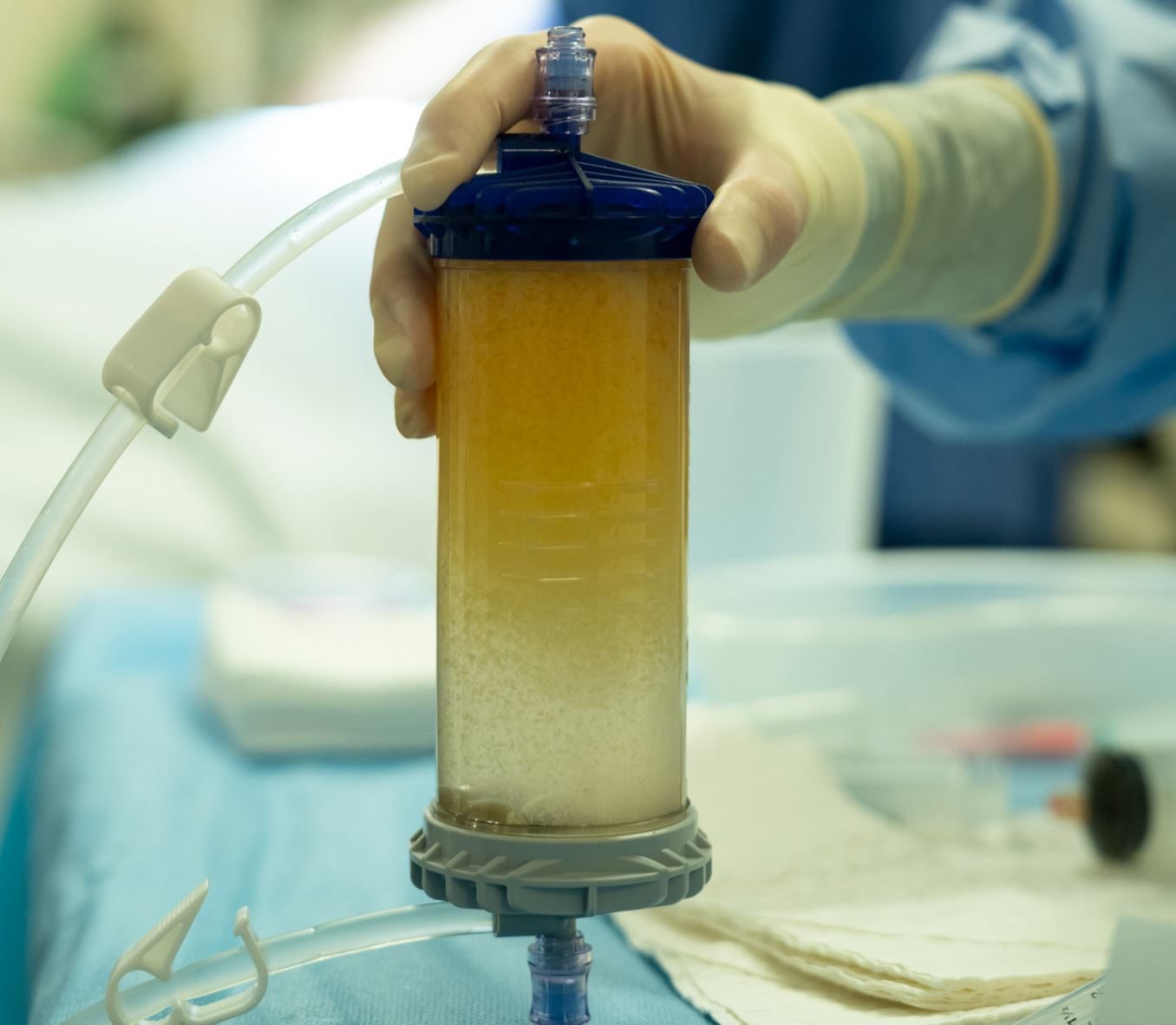New research examines the effectiveness of fat as an anti-inflammatory

Can using Micro fragmented Adipose tissue give long lasting anti – inflammatory benefits?
Adipose Tissue and Lipogems® Adipose tissue, or ‘fat’ is an anatomical term for loose connective tissue composed of adipocytes. Its main role is to store energy in the form of fat and cushions and insulates the body. It is a very important and active endocrine organ.
Lipogems® is a technique to harvest, process, and inject minimally manipulated adipose (fat) tissue through a mild mechanical force. The fat is washed, emulsified,and micro fragmented to remove the blood and oil residues.
In order to look at this investigation the following terms are used:
Lipogems® – the process enables MSCs taken from your own fatty tissue to be injected directly into sites of tissue damage,boosting their local presence and aiding recovery.
MFAT – Microfragmented Adipose Tissue MSCs- Mesenchymal Stromal Cells LP – Fat Lipaspirate. In medical circles and Orthopaedic and general surgery, human adipose tissue containing MSCs obtained from fat through a device and then used as a single shot injection has been used to help and investigate osteoarthritis tissues.
This new technique has been developed to reduce the size of adipose tissues, eliminate the oil and blood residue and produce a Microfragmented fat in a relatively short amount of time (15-20 minutes) and then can be injected into the patient. This procedure is known as Lipogems®. Lipogems® is a minimally invasive treatment that harnesses natural repair cells removed from the patient’s own body fat to target problems affecting tendons,ligaments, joints, and muscles including osteoarthritis. The technique is gentle and when injected into the inflammatory tissue there have already been positive healing and regenerative results.
This investigation was carried out to see if this micro fragmented adipose tissue also possesses anti inflammatory properties and benefits for the patient. The fat tissue shows anti – inflammatory and cell protective properties and the MSC contains specific anti -inflammatory and immunosuppressive cytokines (broad and loose category of small proteins) and growth factors. This treatment also shows promise for the investigation of musculoskeletal regeneration and anal fistula.
The MFAT and LP from 17 human donor tissues were investigated side by side for this study from patients undergoing plastic surgery, to observe the long term survival of the MSCs, and the anti inflammatory effects that these injections could provide.
The study was to investigate the long term survival and anti inflammatory activity in order to repair tissue and regenerate cartilage. Could the stem cell growth factors improve tissue and act as an anti inflammatory?
100ml of LP was obtained from each patient – it was collected by syringe and pushed through the Lipogems® device through a filter. Five stainless steel marbles inside the device were shaken and the fat tissue migrated to the top of the device whilst the blood contaminated cells and undesired fat residues were removed. The solution appears as yellow and clear, it is turned upside down and the tissue is obtained by pushing a syringe through a reduction filter. It was then aspirated by a syringe connected to the device. The MFAT product is then ready for investigation.
The specimens freshly obtained from the patients were then washed, and went under centrifugation- 3ml of MFAT and LP were collected and incubated, evaluated, cultured, filtered, and examined. The cells were investigated for Mesenchymal markers and anti inflammatory activities during a long term culture.
There was significant variability among the donors, but the total protein concentrations, DNA content and number of cells were higher in LP compared to MFAT, but the number of MSCs in the LP was superior. The quality of MSC varies from patient to patient however , in various treatment regimens, these differences have not altered the outcome.
After 28 days of culture, the differences between the MFAT and the LP were more evident – the MFAT released significant cytokines and in the LP, the cytokines were reduced dramatically. The total cell number as well as the MSC content in MFAT decreased more slowly compared to the LP specimens and the amount of cytokines decreased more rapidly in the LP specimens.
From these results the Microfragmented adipose tissue is effective in long lasting anti inflammatory activity. It supports the long term survival of the MSC content whilst releasing a combination of cytokines involved in the inflammation process.
There is a necessity for more in depth study and analysis, particularly in clinical trials in order to fully understand and fine tune the process and effects.The anti inflammatory investigation and properties are extremely complex but real benefits of MFAT in Lipogems® is indicated through these early stages.
The use of this regenerative adipose tissue (stromal cells/MSCs) is gaining support for the treatment of such things as osteoarthritis through skin wound healing, to stroke, to brain injury, cartilage repair, anti inflammatory and stroke therapy through to Treatment for Parkinson’s.
The use of adipose tissue has gradually developed into an exciting new way to be used in tissue regeneration and with the added bonus of very few and non apparent side effects.
The potential for tissue to regenerate is an exciting gateway for a new generation of tissue repair and therapy study which is also safe and immediately effective.
This study opens doors to further potential fat grafting operative procedures and regenerative processes.
